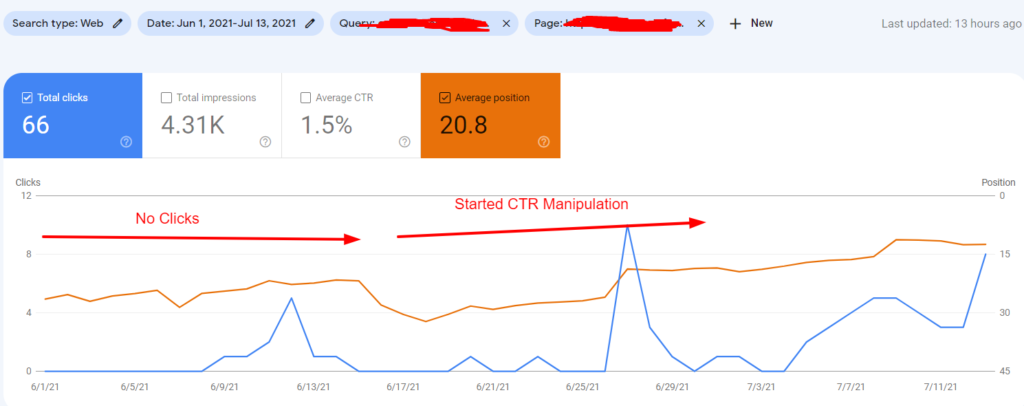CTR Control: A Video Game Changer for Digital Campaigns
The rise of CTR adjustment has without a doubt changed digital marketing strategies, giving marketing professionals with tools to boost involvement and drive traffic successfully. What ramifications might this stabilizing act hold for the future of digital projects?
Understanding CTR Adjustment
Although click-through rate (CTR) control may feel like a simple technique in electronic marketing, it includes a series of strategies focused on synthetically inflating interaction metrics. This adjustment can take various types, consisting of using click ranches, robots, or deceptive ad positionings that misinform customers into clicking. These methods can endanger the integrity of efficiency data, making it testing for marketing experts to gauge the authentic effectiveness of their campaigns.
Furthermore, CTR adjustment increases honest problems, as it undermines the transparency of electronic advertising and marketing. The reliance on inflated metrics can result in illinformed advertising decisions, skewing resource appropriation and campaign techniques. Organizations might spend heavily in networks and strategies that show up successful however do not yield actual interaction or conversions.

Advantages of Click-Through Price Optimization
Enhancing click-through price (CTR) is necessary for enhancing the performance of digital advertising campaigns. A higher CTR indicates that a bigger percentage of customers are engaging with the content, which can lead to boosted web site web traffic and much better conversion rates. By boosting CTR, brand names can successfully allot their advertising and marketing resources to efforts that produce the greatest returns.
One of the primary advantages of CTR optimization is the capacity for enhanced ad placement and reduced expenses - CTR Manipulation. Platforms like Google Ads award greater CTRs with much better ad positioning and reduced cost-per-click (CPC), permitting marketing professionals to extend their spending plans better. Additionally, a well-optimized CTR can boost brand name exposure, as higher involvement prices typically correlate with increased natural reach

Methods for Efficient CTR Control
To effectively control click-through prices (CTR), marketing experts can use a variety of critical methods that boost customer interaction and drive website traffic. One fundamental approach is maximizing advertisement duplicate to produce compelling and action-oriented language. CTR Manipulation. Using strong call-to-action (CTA) phrases urges individuals to take prompt action, raising the chance of clicks
An additional efficient strategy is A/B screening, which enables marketing experts to contrast various ad variants. By systematically assessing efficiency metrics, they can identify which elements resonate best with the target market, therefore improving their strategies for optimal effect. Additionally, leveraging aesthetically enticing graphics and concise messaging can capture attention quickly, making it a lot more probable that customers will involve.

Last but not least, maximizing touchdown web pages to make certain a seamless customer experience can reduce bounce rates and encourage more communication, eventually fostering higher CTR. By integrating these methods, marketing professionals can successfully adjust CTR to anchor attain their campaign purposes.
Measuring Success in Digital Campaigns
Measuring success in digital campaigns calls for a clear understanding of vital efficiency indications (KPIs) that straighten with project goals. KPIs act as measurable metrics that aid evaluate the performance of numerous approaches used throughout the project. Usual KPIs consist of click-through prices (CTR), conversion prices, expense per acquisition (CERTIFIED PUBLIC ACCOUNTANT), and roi (ROI)
To efficiently measure success, it is vital to develop details, quantifiable objectives first of the project. If the key objective is to raise brand understanding, metrics such as impressions and involvement rates may be prioritized. On the other hand, projects concentrated on straight sales would take advantage of an extra thorough evaluation of conversion rates and income produced.
Routine analysis of these KPIs makes it possible for marketing professionals to make data-driven choices, optimizing their methods in real-time. Making use of logical devices can assist in tracking efficiency and identifying fads, enabling quick adjustments to boost project end results. Inevitably, a thorough method to measuring success not only highlights areas for enhancement but also reinforces the total performance of digital advertising initiatives, driving continual growth and engagement in the long-term.
Future Patterns in Digital Advertising And Marketing
Anticipating the future of digital marketing exposes a landscape shaped by quick technological advancements and transforming customer habits. As expert system and device learning remain to develop, marketing professionals will progressively utilize these innovations to customize projects at an extraordinary scale. Anticipating analytics will allow brand names to expect client requirements, enhancing advertisement placements and content shipment in genuine time.
In addition, the surge of voice search and clever devices is transforming just how customers engage with digital content. Marketers will need to adapt their methods to make sure exposure across several platforms, consisting of voice-activated aides. This shift demands a focus on conversational advertising and marketing, emphasizing interaction through dialogue instead than typical marketing tactics.
In addition, personal privacy concerns are motivating modifications in information collection techniques. Transparency and moral data use will come to be critical, driving brand names to cultivate trust and loyalty among consumers. The ongoing advancement of social media sites article systems will also influence advertising and marketing strategies, with an enhanced focus on authenticity and user-generated material.
Conclusion
In summary, CTR adjustment represents a considerable improvement in electronic advertising and marketing techniques, providing immediate advantages with Continued improved interaction metrics. However, the honest considerations surrounding such practices necessitate a careful method to make certain long-lasting brand honesty and authentic target market link. By striking an equilibrium between optimization strategies and genuine engagement, online marketers can cultivate sustainable connections with customers. The continuous evolution of digital advertising will rely on this fragile interaction, forming the future landscape of brand-consumer interactions.